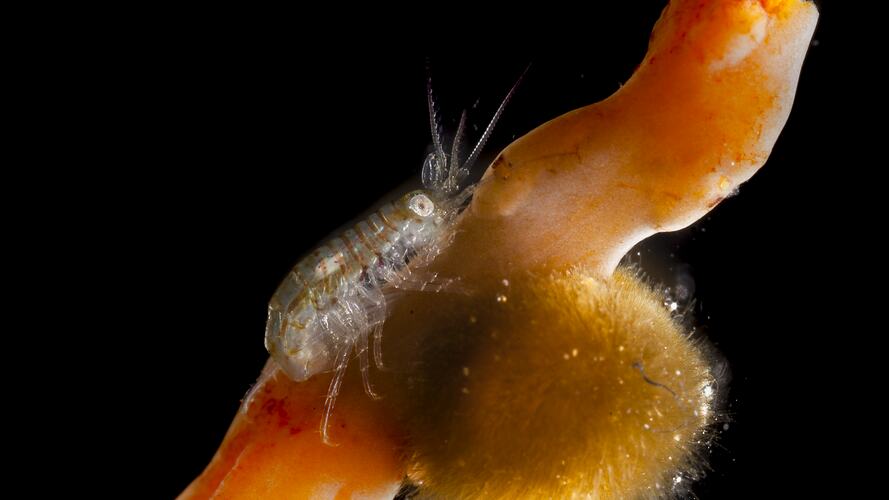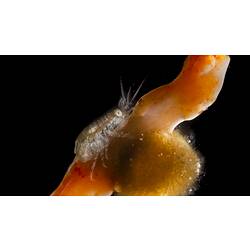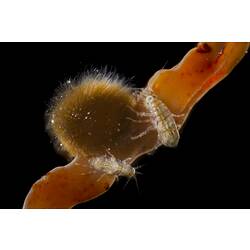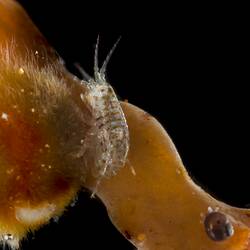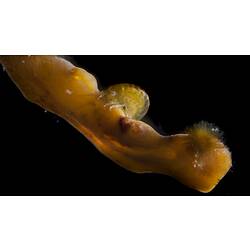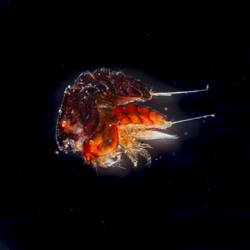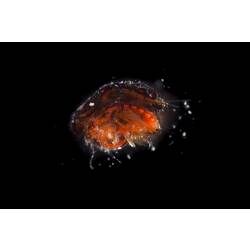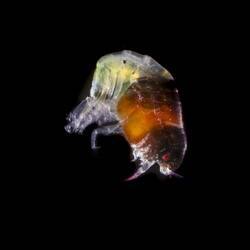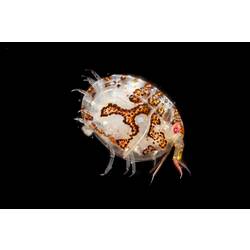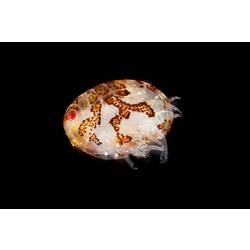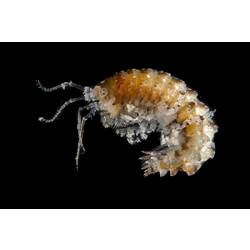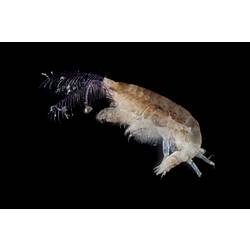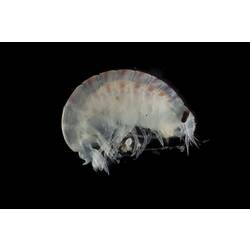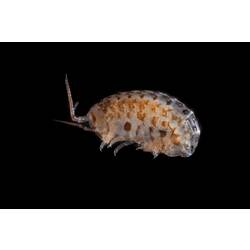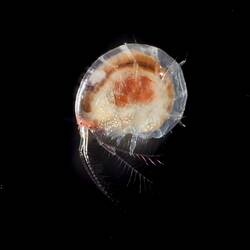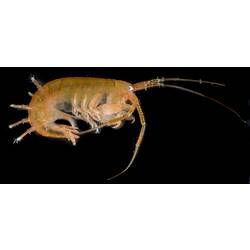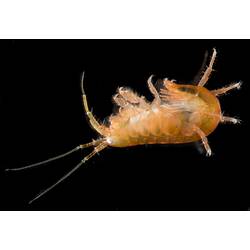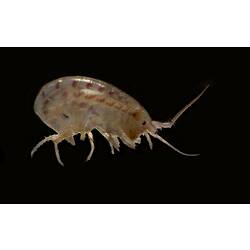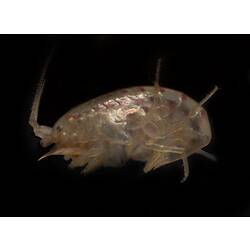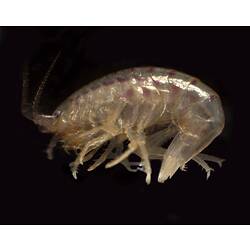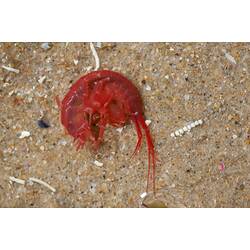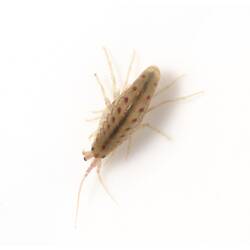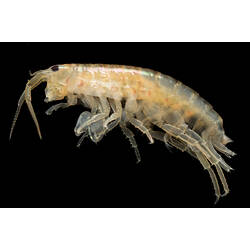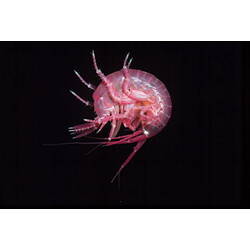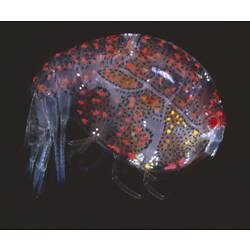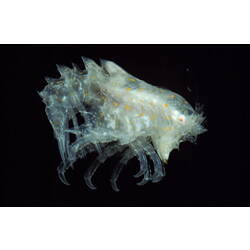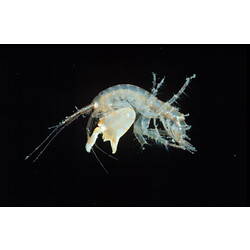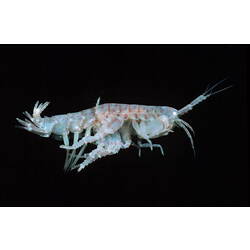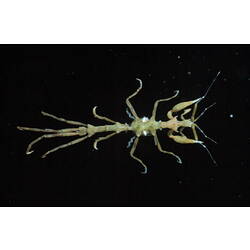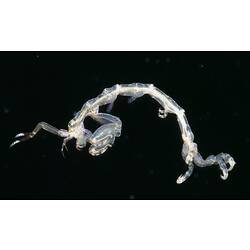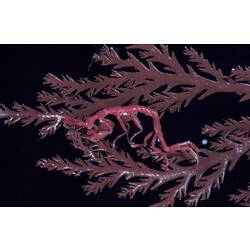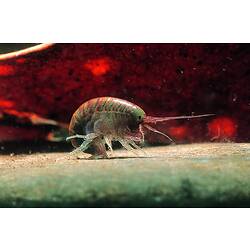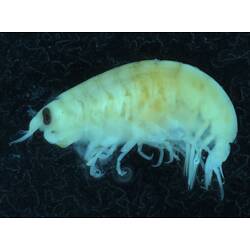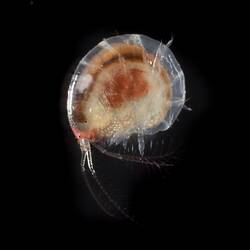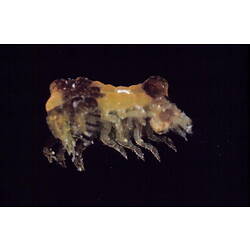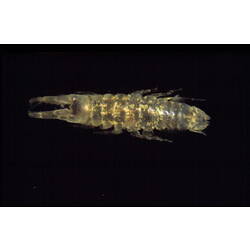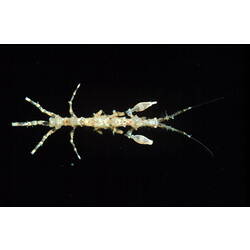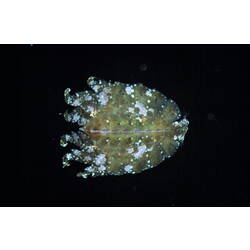General Description
Body segmented and flattened at the sides. Seven pairs of walking legs at front and three pairs of small limbs (pleopods) at the rear. Most species encountered in Victorian waters are less than 10 mm long.
Biology
The amphipods are one of the great success stories in the Crustacea. There are probably more species and more environments inhabited than for any other group. In the sea amphipods can be found burrowing in sandy and muddy sediments, living in tubes on hard surfaces, dwelling among macroalgae and sessile invertebrates, and as part of the plankton. Estuarine, freshwater and even terrestrial species are known. Most are in the size range 1-10 mm but in the deep sea scavenging species as long as 28 cm have been captured.
Distribution
Worldwide. Mainland Australia and Tasmania.
Habitat
Marine, estuarine, freshwater and terrestrial environments.
More Information
-
Animal Type
-
Animal SubType
-
Brief Id
Body flattened sideways, seven walking legs, three small limbs.
-
Maximum Size
28 cm
-
Habitats
-
Diet
Omnivore
-
Diet Categories
Organic matter
-
Hazards
Some species of intertidal amphipods have been known to cause a painful nip. The wound can bleed profusely although no long term side effects are known.
-
Endemicity
-
Commercial
No
-
Taxon Name
-
Common Name
Amphipod
-
Phylum
-
Subphylum
-
Superclass
-
Class
-
Subclass
-
Superorder
-
Order
